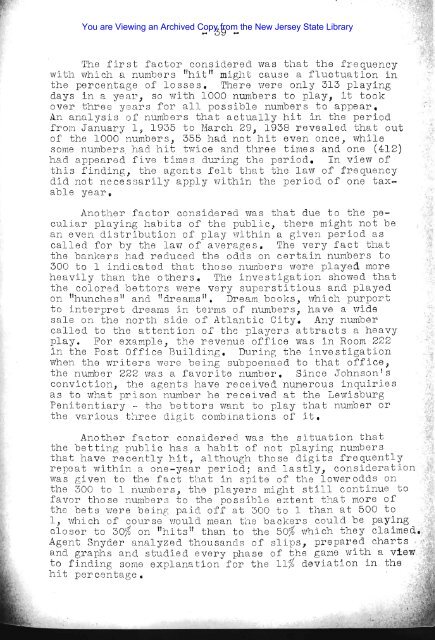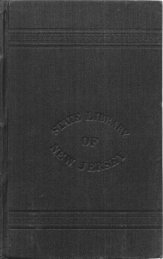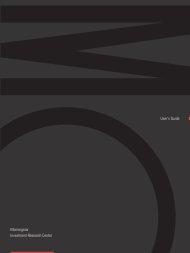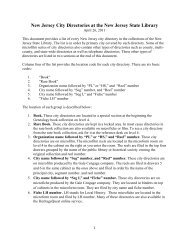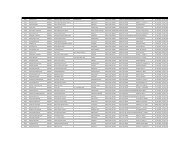j329j66 - State Library Information Center - The New Jersey State ...
j329j66 - State Library Information Center - The New Jersey State ...
j329j66 - State Library Information Center - The New Jersey State ...
Create successful ePaper yourself
Turn your PDF publications into a flip-book with our unique Google optimized e-Paper software.
You are Viewing an Archived Copy from the <strong>New</strong> <strong>Jersey</strong> <strong>State</strong> <strong>Library</strong><br />
... 39 ...<br />
<strong>The</strong> first factor considered was that the frequency<br />
with which a numbers "hit" might cause a fluctuation in<br />
the percentage of losses. <strong>The</strong>re were only 313 playing<br />
days in a year, so with 1000 nurriliers to play, it took<br />
over three years for all possible numbers to appear.<br />
An analysis of numbers that actually hit in the period<br />
from January 1, 1935 to March 29, 1938 revealed that out<br />
of the 1000 numbers, 355 had not hit even once, while<br />
some numbers, had hit tVvice and three times and one (412)<br />
had appeared five times during tho period. In view of<br />
this finding, the agents felt that the law of frequency<br />
did not necessarily apply within the period of one taxable<br />
year.<br />
Another factor considered was that due to the peculiar<br />
playing habits of the pUblic, there might not be<br />
an even distribution of play within a given period as<br />
called for by the law of averages. <strong>The</strong> very fact that<br />
the bankers had reduced the odds on certain numbers to<br />
300 to 1 indicated that those nwnbers were played more<br />
heavily than the others. <strong>The</strong> investigation showed that<br />
the colored bettors were very superstitious and played<br />
on "hunches ll and "dreams l '. Dream books, which purport<br />
to interpret dreams in terms of numbers, have a wide<br />
sale on the north side of Atlantic City. Any number<br />
called to the attention of the players attracts a heavy<br />
play. For example, the revenue office was in Room 222<br />
in the Post Office Building. During the investigation<br />
when the writers were being SUbpoenaed to that office,<br />
the number 222 was a favorite number. Since Johnsonts<br />
conViction, the agents have received numerous inquiries<br />
as to what prison number he received at the Lewisburg<br />
Penitentiary - tho bettors want to play that number or<br />
the various three digit comblnations of it.<br />
Another factor considered was the situation that<br />
the betting public has a habit of not playing numbers<br />
that have recently hit, although those digits frequently<br />
repoat within a one-year period; and lastly, consideration<br />
was given to the fact that in spite of the lower odds on<br />
the 300 to 1 nQmbers, the players might still continue to<br />
favor those numbers to the possible extent tllat more of<br />
the bets were beinp, paid off at 300 to 1 than at 500 to<br />
1, vnlich of course-would mean the backers could be paying '.<br />
closer to 30% on trhits ll than to the 50% which they claimed.<br />
Agent Snyder analyzed thousands of slips, prepared charts, I<br />
and graphs and studied every phase of the game with a view<br />
to finding some explanation for the 11% deviation in the ,<br />
hit percentage •<br />
-.


